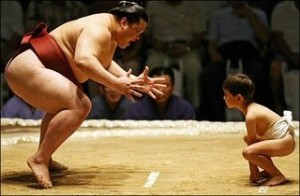Imagine this scenario: A highly admired and valued leader departs from your place of work. Despite being much their junior, you’re asked to be their replacement. What do you do?
Step 1: Build a group of trusted advisors
There will be times in the coming months where you want guidance from someone more experienced than yourself. Establish a mentorship relationship with people outside of your organization that can help you navigate difficult situations and provide perspective. This can be as simple as saying, “I would love to soundboard with you and get your advice as I step into this new role.” Ideally you can also establish this relationship with the leader who is departing.
Step 2: Understand what the leader was doing, and why
The advice of multinational author and work productivity speaker Steven Covey is to seek to understand before being understood. Try to learn as much as you can about what the previous leader was doing before they depart. Essential to this stage of investigation is to also seek out the motivation or rationale behind each of those activities.
Step 3: Understand what other people thought the leader was doing, and why
People will naturally be a little skeptical if a David is asked to be a Goliath. To win over your colleagues, you’ll want to demonstrate that you care about their opinions. Further, if you’re a good leader, you will also actually care about their opinions! Ask people what value they thought that the previous leader brought to the table, and ask what you can do to make their lives easier. Doing so helps you to convert these individuals into your support team and allies.
This step is especially important if you’re replacing a leader that had incredible rapport.
Step 4: Do what the previous leader was doing, the way they did it
There is no better way to jumpstart your learning than by mimicking the actions of a master. This approach to learning shows up in two of my favorite hobbies: dancing, and gaming. The fastest way that you can learn to be a good dancer is by learning “legacy” dance routines that were created by some of the greatest dancers of all time. Similarly, gamers can jump-start their learning by following the patterning of a top player; copy their talent tree, try the same build order, use the same cards as them, etc.
By mimicking the actions of the previous leader, you will internalize the understanding of why they operated the way they did. With this understanding you will then have clear sight of what can be improved.
Step 5: Change the things that cannot be sustained
A healthy way of viewing your transition to becoming Goliath is to see it as a passing of the baton. The previous leader propelled the organization to where it is today, and as a leader, it is your responsibility to help it continue to improve. As you live in the shoes of the previous leader, you will start to identify ways to improve how the organization works. You will also be positioned to influence these changes. Partner with your newfound allies and supporters, and pursue the changes that help everyone to win.
Ruthlessly seek out any and all activities that are an undue burden on your time and your teams, for these are most assuredly unsustainable activities. This has many manifestations, but be on the look out for disenfranchised teams and team members. Empowering your colleagues has a tremendous effect on your own ability and availability to lead. It will also help you and your colleagues to see you as the Goliath that you are.
